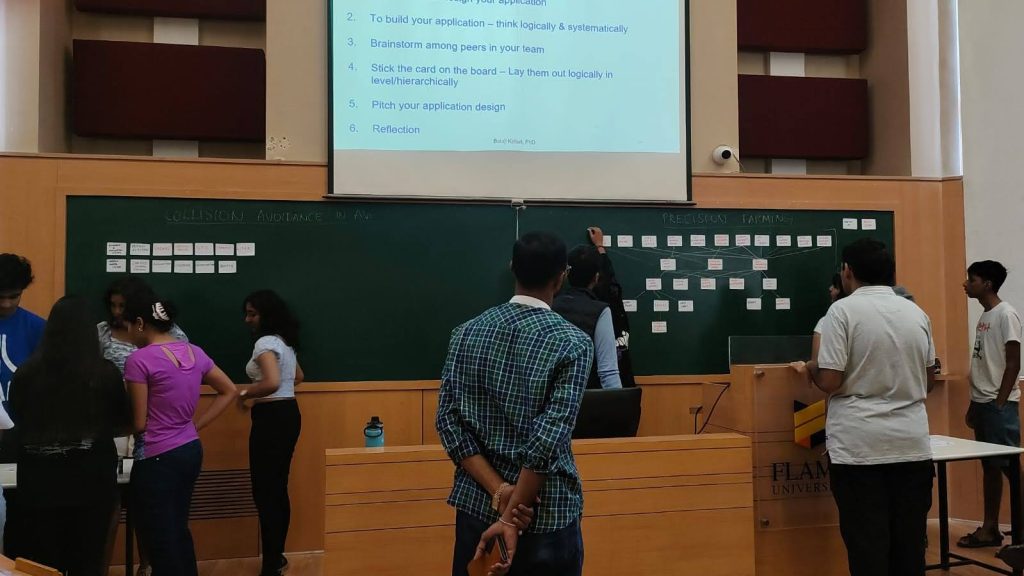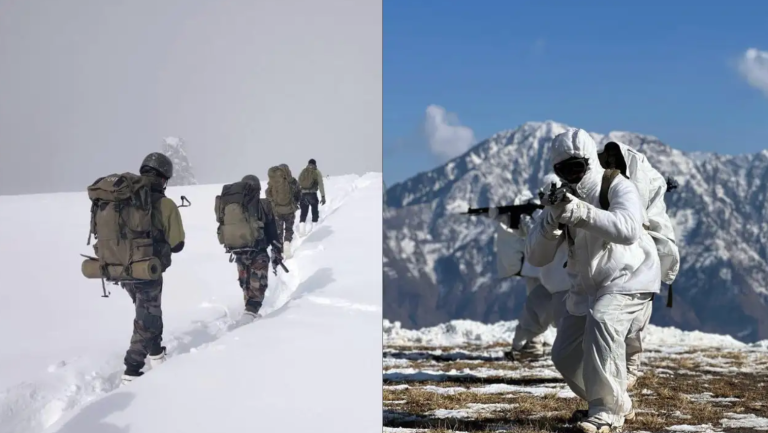Despite an all-too-prevalent emphasis in India on a certain sense of ‘stability’ — in terms of higher income, workforce adaptability, even social respectability — associated with technical education, a December 2023 Business Standard article claims that “Just 10 percent of the 1.5 million engineers graduating this financial year are expected to land a job”. Poor assessments of success have long been the reality of India, with desultory pursuits of education for cash, not character, proving ironically counterintuitive. In our contemporary digital-first societies, demand is now evolving to make way for more non-tech professionals and talent proficient in soft skills as much as their technical capabilities. World Economic Forum’s Future of Jobs 2023 report also corroborates this stance, emphasizing the strengthening of “key growth skills” such as analytical thinking, creative thinking, curiosity, social influence, resilience, et cetera to navigate the world’s increasingly technologized terrain.
While continuing to exhibit a great deal of potential in our country, siloed technical know-how is no longer enough. Rigorous chalk-and-board instruction across schools and universities in India, especially for science disciplines, have pushed learners to imbibe formulaic knowledge rather than be encouraged to create and explore meanings of their own accord. Much is lost in this process of regurgitating information, devoid of fostering any deeper connection with the world. To build capacity and realize the vision of a Viksit Bharat, the nation must gear toward paradigmatically shifting its outlook on education. This necessitates a comprehensive overhauling of the mindset of educators and a fundamental reevaluation of instructional strategies.
An effort to structurally reconceive this unidimensional pedagogy has come through the The National Education Policy (NEP) of 2020, emerging in the midst of a pandemic-ridden world, and marking a transformative change in promoting student-first education. Although continuing to grapple with the problem of infrastructural constraints and limited accessibility in terms of mass technology adoption and digital literacy, NEP’s promise of promoting a dynamic model of learning, along with its multidisciplinary and holistic focus across K-12 and higher education, is certainly the way forward. Pedagogical history attests that traditional teaching methods alone have failed to create meaningful learning experiences to promote learners’ interest, or hone crucial life skills such as problem solving, decision making, communication, teamwork, and emotional intelligence — all integral not only to bringing value as professionals, but to fostering thoughtful citizenship and enriching one’s personal life at large. The recently published My City My Responsibility handbook by Janaagraha is a step in this direction, that educates while offering a multi-stakeholder analysis of urban challenges. Within segregated classrooms and through departmentalized instruction, however, not only do students lose out on engaging critically with the world around them, but are also hindered from better assessing their capabilities and interests, remaining relegated to the confined scopes of predefined academic and professional trajectories.
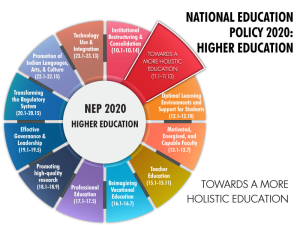
Fig. 1 Decoding NEP 2020 (Source: educationworld.in)
Professor Balaji Kalluri, Faculty of Environmental Studies associated with the Department of Natural and Physical Sciences at FLAME University, Pune, has rejected this traditional pedagogy to promote NEP-endorsed heutagogy and applied thinking in his teaching approach. As a strong proponent of game-based learning, he believes firmly in active and experiential strategies, as was seen in his inaugural session facilitated in a first-year programming classroom. To inculcate in his STEM learners a responsible design-thinking outlook grounded in our socio-technical reality, Professor encouraged the class to build an Internet of Things (IoT) application and engage in a systems mapping exercise. This required a holistic evaluation of benefits and risks, allowing students to proactively think through their designs rather than passively absorb a given set of codes to build their app models in a traditional classroom setup. The class was divided in two groups and provided with several technology components — sensor cards, actuator cards, functionality cards, logic cards, and communication & network cards among others — to build and present a design of their chosen application ecosystems, them being Collision Avoidance in Autonomous Vehicles (AVs) and Precision Farming techniques (see fig. 2). It is critical to mention at this juncture that first-year students at FLAME University are encouraged to take up multiple discipline-agnostic courses, and not disclose their choice of major until in their second-year. This bunch was entirely heterogeneous, with students coming from multidisciplinary fields, and engaging in a constructivist, collaborative learning environment to gain a gestalt systems perspective on the interconnectivity of various elements in a synthesized IoT application, as well as understand their relevance in the real-world context.
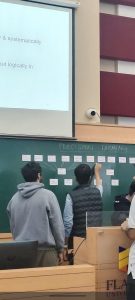
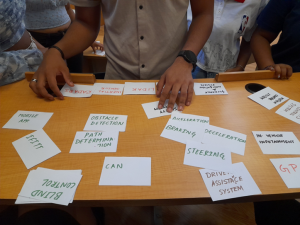
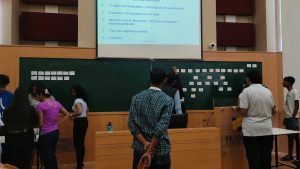
Fig. 2 (Top) Students exploring a pack of cards to build a collision avoidance system in Autonomous Vehicles during their ice-breaker game in the IoT course at FLAME University. (Middle) Guided facilitation of the activity by the instructor. (Bottom) Student volunteers reflecting on their design-thinking process of building the conceptual IoT system.
To ensure a learner-first approach, Professor Balaji encouraged the class to reflect on their experiences after the activity, eliciting a prompt response from a student, who described this method of learning as nothing short of “enriching.” A self-reflection questionnaire was also developed by Professor and myself to comprehensively assess learners’ understanding of their hard and soft skill capabilities. Much to our delight, this student went beyond the norm to stretch the scale, adding a sixth checkbox when asked to rate his capability quotient for building a conceptual IoT model on a scale of 1 to 5, the latter being the highest. “This is what we strive for as educators,” claimed Professor Balaji, “to give them a new perspective on everyday objects. As my dear friend at University College London Dr. Kumar Aniket had once said, overengineering has led to the suppression of social norms. I want to make my STEM students to really think and create to become better citizens, more than anything else.”
It was not just the one student, though. After assessing students’ responses, we discovered that 74.5% ranked their capabilities between 3 and 5, with 25.5% placing it in the range of 1 to 3. On the systems thinking continuum, a notable 88.6% positioned themselves on the higher end, with over 41.2% of learners rating their motivation to learn more about IoT principles a solid 5. The transmission of material knowledge and the opportunity to design instrumental solutions for a sustainable technological society also played a critical role in encouraging 77.7% of our learners to delve deeper into the real-world applications of IoT systems. Surely, these results count for a lot more than customary test scores could.
Providing insights into the structuring of his lesson plans that are centered on infusing creativity in the delivery of complex course material, Professor Balaji condensed his practice into three guiding principles-turned-personal mantras:
1. Curiosity, passion, and hunger for lifelong learning of instructors. Not only does it push the boundaries of instructional design, but also prevents educators from experiencing burnout.
2. Engaging productively with the people around. This allows for greater experimentation and, in many cases, validataton of lesson plans, whilst preventing missing out on time with loved ones during the preparatory period. In my case, I like to pick the brains of my curious 5-year old first (fig.3).
3. Taking time out for onseself. Breaks help teachers develop creative ideas. They are more than necessary for periodic reflection on instructional strategies and their effective delivery, and more importantly, for the educator’s state of mind.
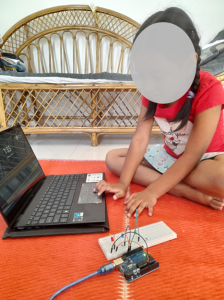
Fig. 3. A creative way to strike work-life balance: Two weeks prior to teaching a new course on IoT, Prof. Balaji actively engages with his 5 year old daughter at his home.
Change has to come from within, though. There is a compelling need for institutions to reevaluate their epistemic regimes and facilitate broader access to thoughtful education for all. For this, structural reformation of institutional spaces is necessary to envision a collaborative and creative educational praxis. To be creative in his STEM instruction, Professor acknowledged FLAME University’s ethos of liberal education in providing teacher autonomy that “allowed me with endless opportunities to be able to explore my interests and rediscover myself as a passionate educator”. Professor’s own profile spans across disciplines — from programming and data science to urban systems and responsible innovation, a multidisciplinary perspective is brought in by the educator, through the support of their institutions first.
As for serving its most important stakeholders, its students, educational spaces need to start placing a greater emphasis on learners’ needs rather than the labor exigencies of industries. Computer Science and Engineering Professor at IIT Bombay, Milind Sohoni has pointed out in his 2017 study on The Making of India as an Engineering Society, of there being “no systematic logic and agency” in science education and training, with the public imagination of science remaining in an “elite capture” — inaccessible for students of STEM disciplines, and most definitely, for the ones beyond. The rigor of academic training must evolve with its curriculum to create dynamic, nurturing knowledge systems rooted in our variegated social reality. Respecting students’ interests, competencies, and unique perspectives — across sciences, social sciences, and humanities — will equip them with a holistic toolkit for future readiness.
Prof. Balaji envisions building a transformative educational project equivalent to NPTEL, to crowdsource and archive the best of creative tools and pedagogies to advance and transform education in India in the interest of greater public good. If you are creative instructor in STEM fields, you are welcome to reach out to him directly via email: balaji.kalluri@flame.edu.in, share your ideas and contribute to advancing nation’s viksit bharat mission through systemic change in education.
Author
-
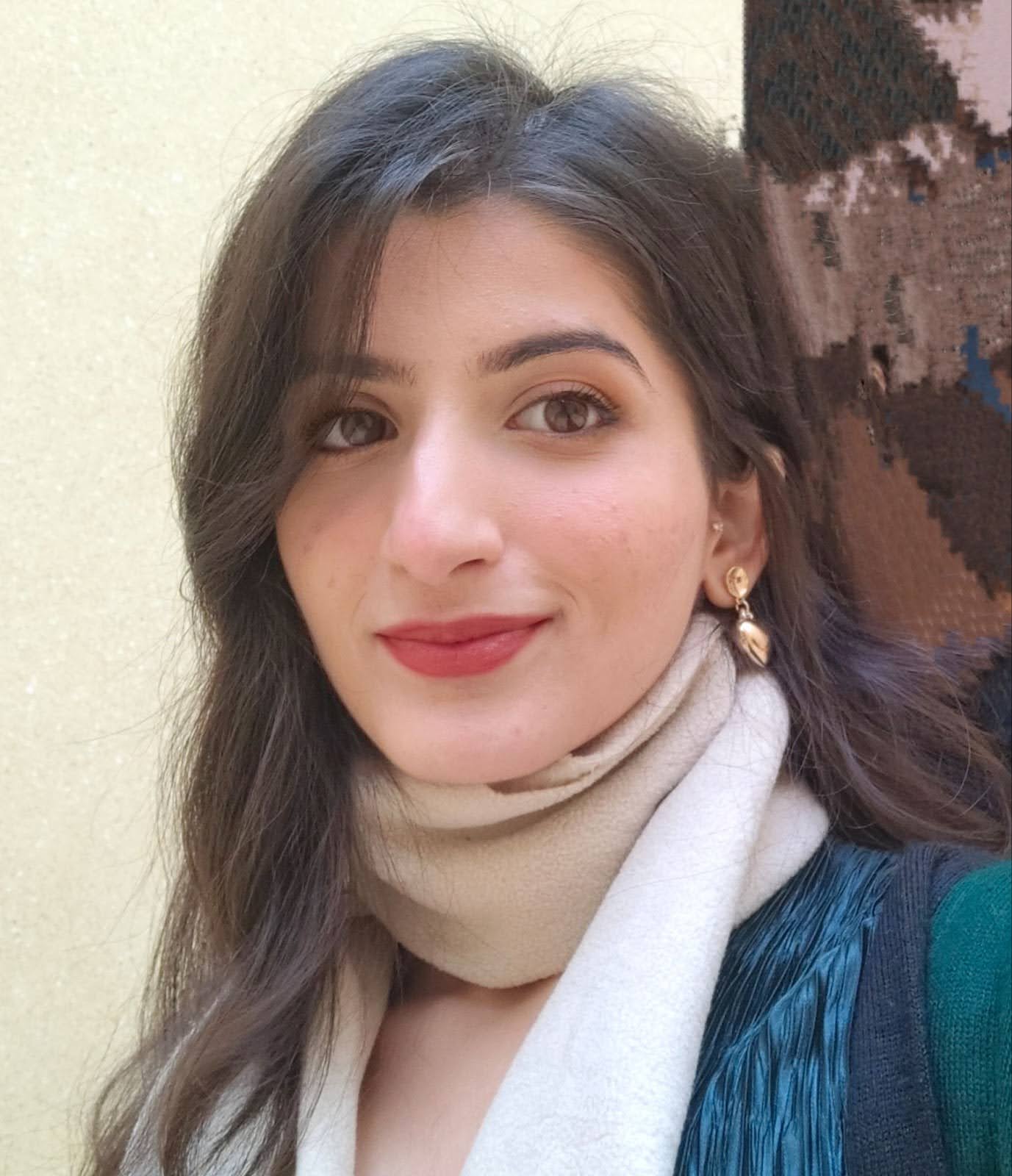
Sadhika Verma is a Research Associate at the FLAME University’s Centre for Digital Learning. Working at the intersection of learning experience design, pedagogical development, and new media tools, Sadhika endeavors to make learning effective, engaging, and accessible to all audiences. Currently, she is building a comprehensive online course on Emerging Technologies for Businesses and Society for students within FLAME and beyond. Her research pursuits are centered on leveraging technology to establish intuitive and inclusive socio-cultural practices. With both Master’s and Bachelor’s degrees in English Literature from Ramjas College, Delhi University, Sadhika is also interested in Digital Humanities, Postcolonial literature, Partition literature, and Women’s Writings. Her research articles and poetry have been published by the Kenneth P. Dietrich School of Arts & Sciences, University of Pittsburgh, St. Stephen’s College, Delhi University, and the Monograph Magazine, among others. Apart from research and writing, she also has experience working as a freelance editor and a teacher with Teach for India.

